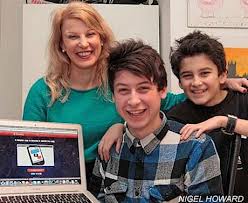The story of Nick D’Aloisio is not about fame and money but about a young genius who pursues his dreams in solving difficult problems in the internet for mobile applications.

Nick was born November 1, 1995 in Austrilia. Nick’s dad is an investment banker and his mother’s a lawyer. He has a younger brother. He grew up in Perth, Australia, where he fell in love with rugby and cricket. The clear, big night skies made stargazing a fun activity and before you know it, he was learning everything about stars and galaxies and black holes when he was not even 5. At age 7, his family moved to London. A year later, he annoyed his parents into buying him a MacBook Pro.
He taught himself everything with diligences and eagerness in computer programming at age 12. Nick received his first investment at age 15 from Hong Kong billionaire Li Ka Shing (Horizons Ventures, also behind Siri, Spotify and Facebook investments). That investment helped fund the creation of an early Summly prototype. Summly is an application aimed at transforming how we consume news on mobile devices by using natural language processing and machine learning to generate informative, bite-sized summaries.
Change The Way You Read News
The new Summly was created with two key advantages over the usual way people read news on the iPhone, which is in a web browser. First, Summly, like the name suggests, summarizes the news (using D’Aloisio’s painstakingly created algorithm) into a piece of text custom-sized for an iPhone. This means a Summly summary on an iPhone 5, with a larger screen, is longer than a summary on older models. The original Summly condensed articles into bullet-points; its latest iteration summarizes articles into text that has the flow of natural language.
Second, and perhaps more importantly, the summaries are preloaded onto the app each time it’s opened. This means no wait time to download news snippets — unlike on mobile web browsers, they’re all there. With Summly, a user is able to access a newspaper’s worth of “articles” from dozens of publications for browsing, even without Wi-Fi.
